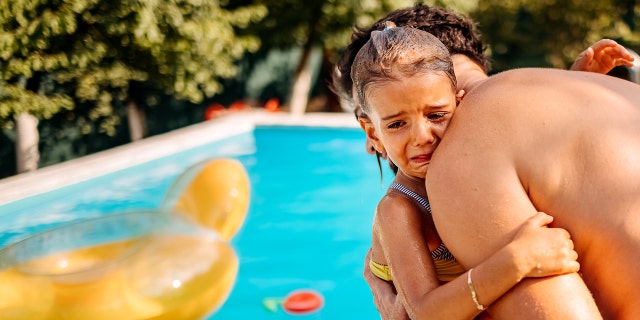Every year, there are some 4,000 fatal drownings and 8,000 nonfatal drownings in the U.S., per the Centers for Disease Control and Prevention (CDC) — and not all of them meet the textbook definition.
Even if a child appears to be “safe” after a water incident, the child could still be in danger if even a small amount of water has entered the lungs.
Unofficially known as “dry drowning,” this condition can cause inflammation or swelling and make it difficult to breathe even after a child is out of the water, according to Dr. Denise Scott, a pediatrician who is co-founder of Oklahoma City’s first after-hours pediatric urgent care clinic.
BE WELL: PREVENT DROWNING WITH THESE CHILD WATER SAFETY TIPS
“Water in the airways can lead to laryngospasm, or vocal cord spasm, making it difficult to breathe,” explained Scott, who also works on the JustAnswer.com platform fielding questions about a wide variety of children’s health issues.
“This makes it difficult to get air into the lungs.”
“If someone inhales water, their response is to cough, which often expels the water,” the doctor said. “The concern is when the cough continues after an episode of 30 to 60 minutes or longer.”

Even if a child appears to be safe after a water incident, the child could still be in danger if even a small amount of water has entered the lungs. (iStock)
Other warning signs that occur immediately after an episode or within an hour include difficulty breathing or speaking, rapid and hard breathing, chest pain, wheezing or vomiting.
Later symptoms, usually within two to three hours, can include confusion, sleepiness, and continued coughing and breathing difficulties, all of which can be signs of decreased oxygen, said Scott.
“Keeping a child calm can sometimes help the muscle spasms to relax,” she added.
Although this condition is uncommon, it can be fatal if symptoms aren’t addressed and lack of oxygen occurs, the doctor said.
“A severe laryngospasm that isn’t relieved ultimately can lead to lack of oxygen and cardiac arrest,” she warned. “Long-term effects are the result of poor oxygen to any organ system, especially the brain, which can result in seizures or brain damage.”
“Young children who cannot swim should have an adult within arm’s reach and wear a personal flotation device.”
Private swimming pools should have a fence around them to prevent someone from wandering in, she went on. Children should always wear life vests when they’re near or around lakes.
CLICK HERE TO SIGN UP FOR OUR HEALTH NEWSLETTER
While post-immersion syndrome can happen to someone at any age, children are at the greatest risk, Scott said.
“Adults and teens are more likely to be at risk if they go swimming after consuming alcohol, but anyone can accidentally inhale water when submersed,” she said.
“The vast majority of the time, this clears up with coughing. For persistent symptoms, one should seek medical care.”

